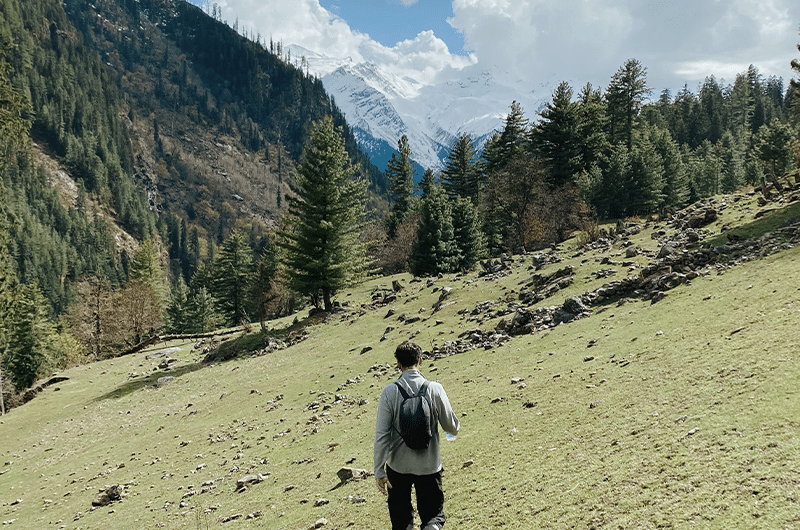
Goa is a state on the Indian coast, famous for being part of the hippie route of the 70s and for being the place where psytrance, a style of electronic music, was born. Goa is made up of several small villages, the most popular among tourists being Arambol, further north, Anjuna and Vagator, in the “center” and Palolem, which is further south. Palolem is certainly the cleanest/preserved and has the best beaches in terms of nature.
Anjuna/Vagator are the ones with the most night parties and I didn’t really like it and Arambol is the one that welcomes more westerners, hippies and with more “vibe”.
What to do in Arambol:
– Sweet Water Lake
– Keri Beach (beach)
– Mandrem Beach (beach)
– Arambol Market (clothes/jewelry market)
– Big Banyan Tree (Banyan is a huge tree, considered sacred in India)
– Sunset in front of Love Temple
– Riva Resort Reggae Party (party every Sunday)
– Namastay (cool hostel to spend the afternoon, slackline, juggle)
Om Lake (lake with wakeboard park)


Rajasthan, also known as the “land of the Maharajas”, is the largest state in India and also home to some of the country’s main palaces and forts. It is multicultural and colourful and some of its main cities are divided by color (pink, blue and golden city).
For those who don’t know, maharajas are like Indian princes known for their riches and ostentation. They assumed political, religious and military leadership for their area, before losing their political power. Today it is a state with a lot of Hindu tradition and also a lot of Muslim influence, home to
85% of the Thar Desert and to elephants, camels, monkeys, cows and goats.
JAIPUR – Pink City
Jaipur is the capital of Rajasthan and was painted pink in 1876 for the arrival of the Prince
of Galles, at the behest of the region’s Maharaja. I spent 5 days in the city, which has
countless attractions, such as temples and palaces.
I stayed at the Horn Ok hostel and I highly recommend it, it’s super clean, common among
travelers and have a wonderful staff. I walked to the old city, which is where some of the
main tourist attractions are located, and rented a tuktuk for 1 day to do the things that are
further away.
What to do:
• Hawa Mahal
• Albert Hall Museum
• City Palace
• Jal Mahal
• Amber Fort (500 rupees = $6): Amber Fort is one of the places I paid the entrance
fee for and it is really worth it. In addition to the view of the city, the place is beautiful
inside.
• Monkey Temple (sunset): view to the city and good for watching the sunset, there’s
lots of monkeys so be aware of any food you bring.
• Shri Jagat Shiromani Ji Temple: my favourite place in Jaipur, such a beautiful
temple.
• Panna Meena: it’s common to find this kind of water well in Rajasthan and this one
in Jaipur is a very beautiful and famous one.
• Nahargarh Fort (sunset)
JAISALMER – Golden City
Jaisalmer is very close to the border with Pakistan, in the middle of the Thar Desert. The
city is considered golden due to the color of desert sand present in all the buildings. It is
known for the Desert Safari Tour, where you spend the night in the desert. One of the
quietest places I’ve been to in India, despite there being a lot of people in the center,
renting a motorbike and going 3/4km away you’ll find a lot of tranquility, villages and
desert.
WHAT TO DO:
Desert Safari Tour
Jaisalmer Fort: Main attraction in the city, the fort is huge and has a market, restaurants,
cafes… You can walk from the city center and get lost in the streets and alleys.
Gadisar Lake: 15 minutes walk from the center and you arrive at this lake, which like
most in India is more traditional than natural, with ghats (those stairs that go down to the
lakes, common in India) and monuments.
Bada Bagh Cenotaphs: Cenotaphs are more or less like cemeteries without bodies, just
tributes, common in India. Entry costs 300 rupees ($3.75) and I thought it was worth it,
the place is beautiful and has great views of the desert too.
Rent a motorbike and get lost in the desert, visiting temples and villages.


JODHPUR – Blue City
Jodhpur is known as the blue city and is a beautiful place.
Jaisalmer is very close to the border with Pakistan, in the middle of the Thar Desert. The
city is considered golden due to the color of desert sand present in all the buildings. It is
known for the Desert Safari Tour, where you spend the night in the desert. One of the
quietest places I’ve been to in India, despite there being a lot of people in the center,
renting a motorbike and going 3/4km away you’ll find a lot of tranquility, villages and
desert.
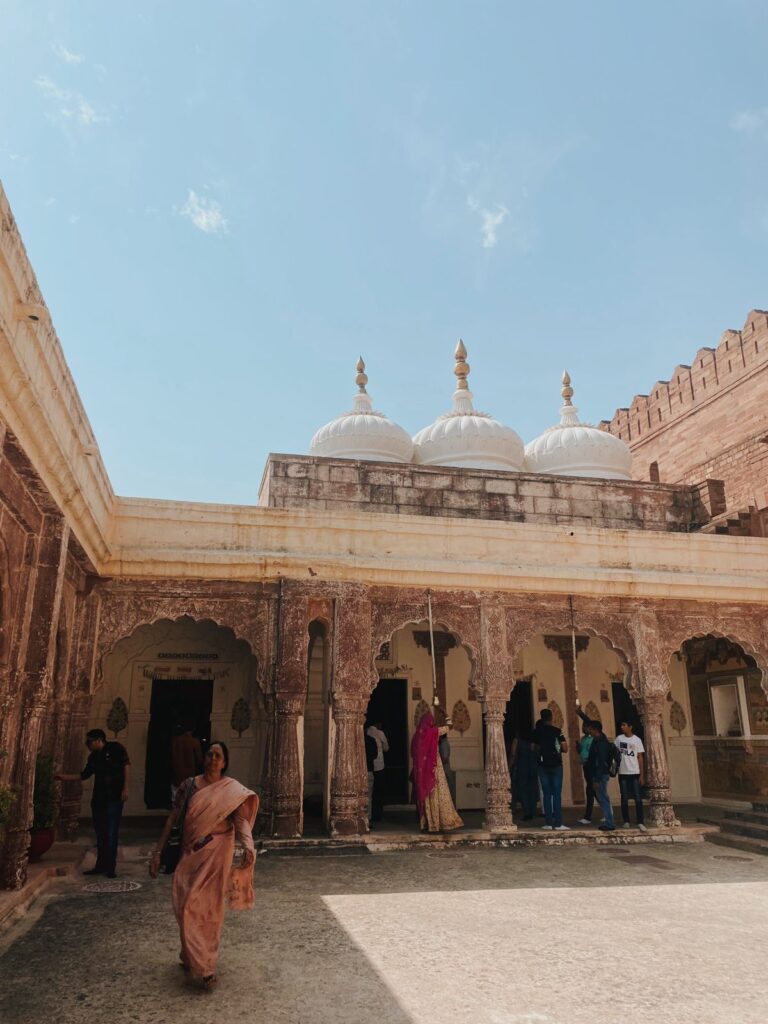
WHAT TO DO:
Desert Safari Tour
Jaisalmer Fort: Main attraction in the city, the fort is huge and has a market, restaurants,
cafes… You can walk from the city center and get lost in the streets and alleys.
Gadisar Lake: 15 minutes walk from the center and you arrive at this lake, which like
most in India is more traditional than natural, with ghats (those stairs that go down to the
lakes, common in India) and monuments.
Bada Bagh Cenotaphs: Cenotaphs are more or less like cemeteries without bodies, just
tributes, common in India. Entry costs 300 rupees ($3.75) and I thought it was worth it,
the place is beautiful and has great views of the desert too.
Rent a motorbike and get lost in the desert, visiting temples and villages.
WHAT TO DO:
– Fort Mehrangargh: it is the city’s main attraction and although it is beautiful, I found the
entrance a little expensive by Indian standards and it was not a program that I particularly
loved. There is a museum and entry is included in the price of 600 rupees ($7.50), but for
me the most interesting thing was the view and the fort buildings.
–
Toorji Ka Jhalra Bavdi: this type of wells is famous in Rajasthan. But this was, by far, my
favorite. Besides it’s beauty, the water looked clean and there were several Indians
bathing and jumping from high heights.
Ghanta Ghar: very traditional market with street food, great for trying typical foods.
Mandore Garden.
Old city: blue part of the city, worth walking through the alleys
– – –
UDAIPUR
Famous for its lakes, Udaipur is one of the most visited cities in Rajasthan. In 3 days I
could understand why! I loved the city, the views from the rooftops of the guest houses and
its thousands of temples.
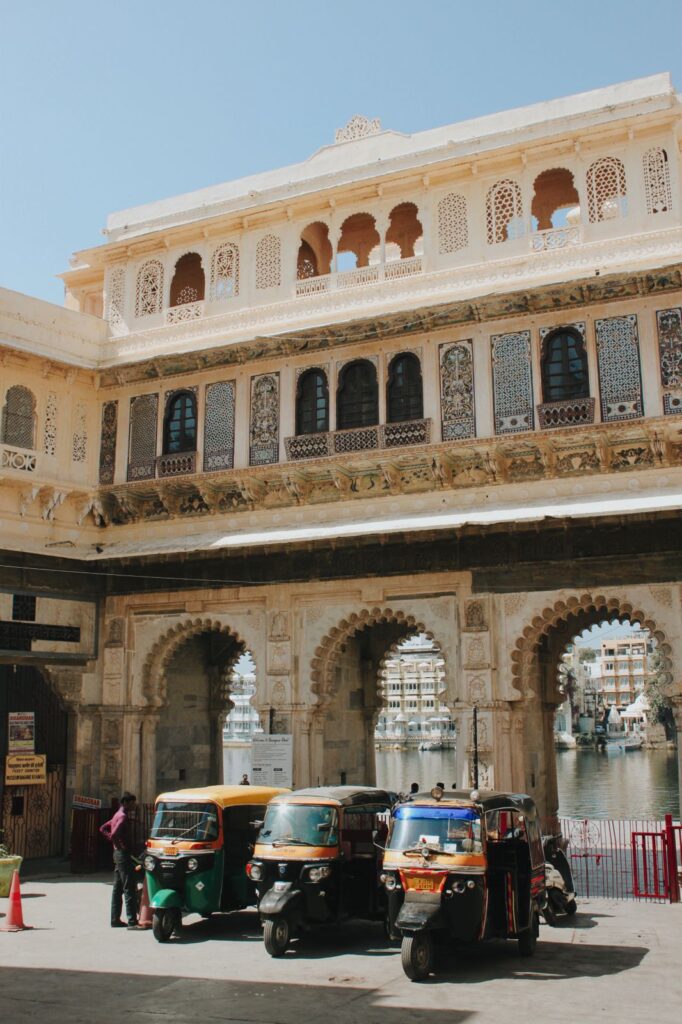
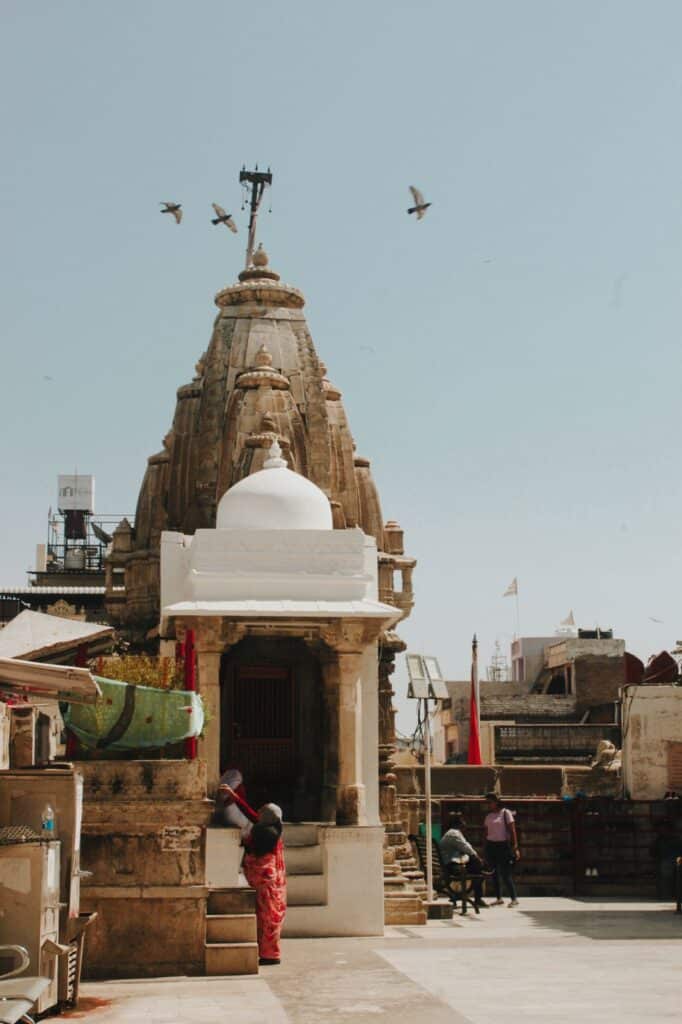
WHAT TO DO:
– City Palace (entrance: 500 rupees = $6): The City Palace is the city’s main palace and is
huge, full of tourists and the kind of attraction I personally don’t love, but the views are
beautiful and it actually contains some interesting information .
– Jagdish Temple: Close to the City Palace is the Jagdish Temple, which, like other temples
in India, is free. It’s a quick visit, but I really enjoyed it.
– Ganghor Ghat: On the same street, going down a little, you will find the Ganghor Ghat
(ghat are these Indian stairs that go down to a lake). Great views of the lake.
– Bagore Ki Haveli (150 rupees = $2): Right next to the Ganghor Ghat lake, it’s a museum
where there are local folk dance performances every day.
– Royal Cenotaph: More than 250 cenotaphs of the Maharajas of Mewar, built 350 years
ago. I loved this place, it was completely empty and the entry is free.
– Sunset from a rooftop (I recommend a restaurant called Nature View Lake – good food,
beautiful and cheap)
Known for its daily cremation ritual, Varanasi is one of the oldest cities in the world and the
holiest among the 7 holy cities of Hinduism. It is believed that by carrying out your
cremation there and depositing your ashes in the Ganges, the cycle of reincarnation ends
and Nirvana is reached. Around 100 bodies are burned daily, 24 hours a day.
Despite the horns, the chaotic traffic and the noise, Varanasi is super traditional and has a
strong energy. There are many Indian pilgrims paying homage on the Ganges River and at the Shiva temple, but besides witnessing the ritual, seeing the river and understanding this
ancient city with Indian customs deeply rooted in culture, there are not many things to do.
It is a place to experience and feel, rather than do. But here’s some of the things you must do:
– Boat trip on the Ganges (sunrise or sunset)
– See the cremation ritual
– Shiva Temple
Mona Lisa Coffee


Dharamkot is one of the villages near the city of Dharamshala, known for being the refuge
of the Dalai Lama and many other Tibetans. Many travelers end up choosing to stay in the
mountains to escape the chaos of the city, being Mcleod, Dharamkot and Bhagsu the
frequently chosen ones. I visited all 3, since you can walk from one to the other. It is a
place surrounded by mountains, waterfalls, trails and cafes, a favorite destination for
Israelis traveling to India.
What to do:
– Visit the Dalai Lama temple in Mcleod
– Bhagsu Waterfall
– Gallu Waterfall
– Triund Trail

Hampi is located in the interior of the state of Karnataka, India, located in the middle of the
country. It is a village in the middle of rice fields, temples and huge rocks.
Hampi is one of those places where the best plan is to walk around the temples and get a
feel for what to do. All the most famous temples, with the exception of the Monkey Temple,
are in Hampi (on one side of the river). I stayed there for 4 days and the other 7 on the
other side, in Hanumanahali, where you need to rent a motorbike/scooter, because things
are further away. The main thing is nature, rather than the temples that make up the
landscape on the other side of the river.
It’s worth seeing both sides and seeing the calm of life in these typical Indian villages. If
you climb, the place is perfect for you, as it is famous for Bouldering.
WHERE TO GO:
– Sanapur Lake (you can jump from up to 8m)
– Hidden Lake (follow the Sanapur Lake road for another 3/4km)
– Sri Vishnu Temple 2
– Sunset on the stones of the main temples
– Monkey Temple
– Chariot Temple
– Tungabhadra River
– See rice fields around Hanumanahali
– Sunset Temple
Like a good stoner blog, I saved the best for last. Himachal Pradesh is one of the most northern states in India, known for the hashish produced there. It is common to see marijuana plantations in the mountains, often not even on purpose, as it is one of the native plants best adapted to the region’s climate. The most famous hashish is the Malana
Cream, which is found in the village of Manala, a place where the inhabitants believe they
are superior beings and where you should not, under any circumstances, touch them. But
besides Malana, each village produces its own charas, so it’s normal to find Tosh Cream,
Pulga Cream… all depending on where you are!
I visited Kasol, Manali, Malana, Tosh and Pulga which are some of the common
destinations among tourists and they are similar and different at the same time. My
favorites were Manali and Tosh. Malana is nice to spend the day, Kasol I didn’t really like
because it doesn’t really have that vibe of being in the middle of the mountains and, once
again, it’s more common among Israelis.
You can get to these places by bus, hitchhiking, taxi, motorbike… but they are places in the
middle of the mountain, with a lot of ups and downs and it’s best to not carry too much
weight when you visit them. They are places surrounded by the Himalayan mountains,
with crystal-clear rivers, delicious food and lots and lots of hashish, mainly consumed in chillum.

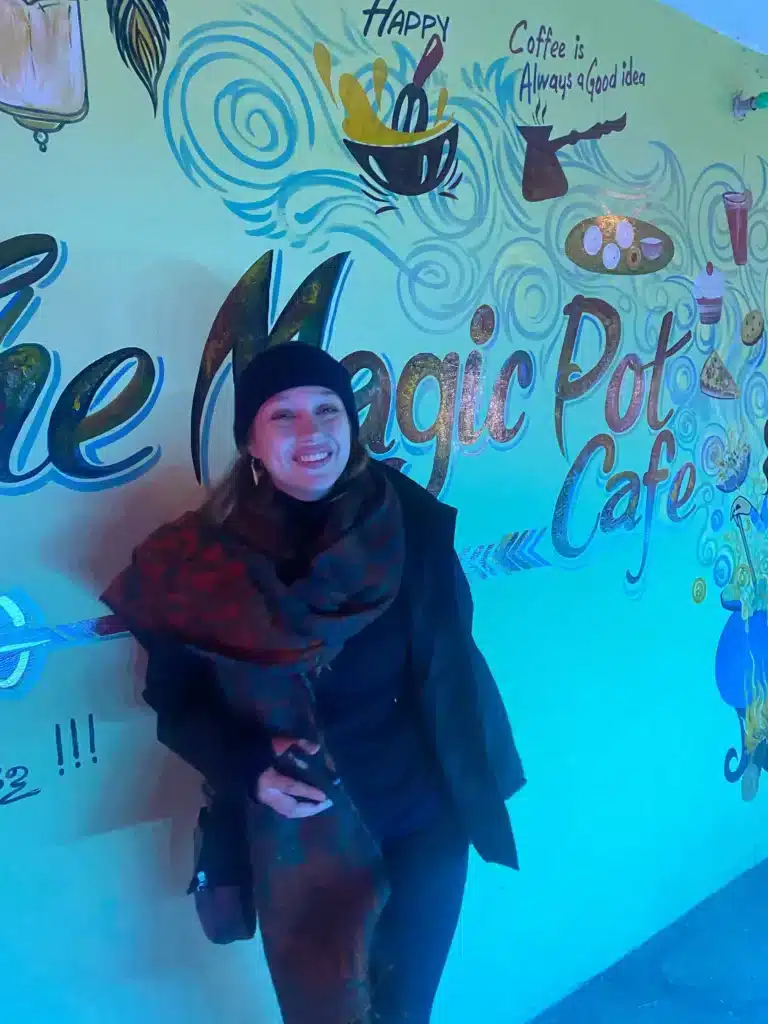

Girls Seeds declara expresamente que no desea inducir a nadie a actuar en conflicto con la ley. Todas las personas que compren semillas de cannabis son responsables de sus acciones y futuras acciones. Girls Seeds no aceptará ninguna responsabilidad a este respecto. Toda la información en el sitio web es únicamente para fines educativos y no está destinada a condonar, promover o incitar el cultivo de sustancias ilegales y/o controladas.